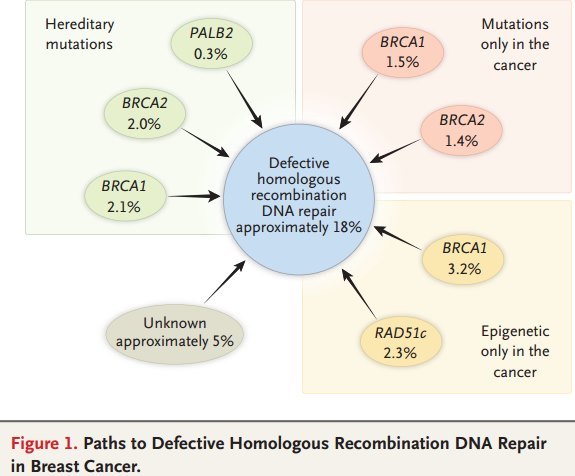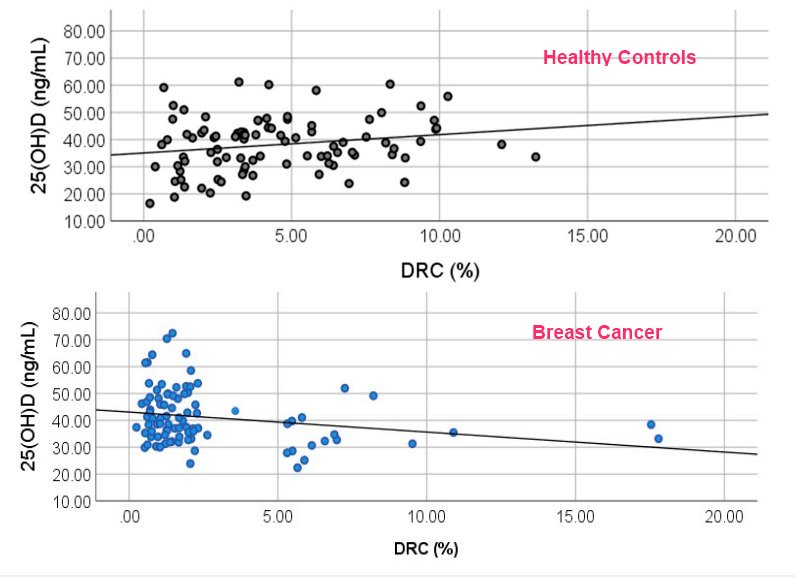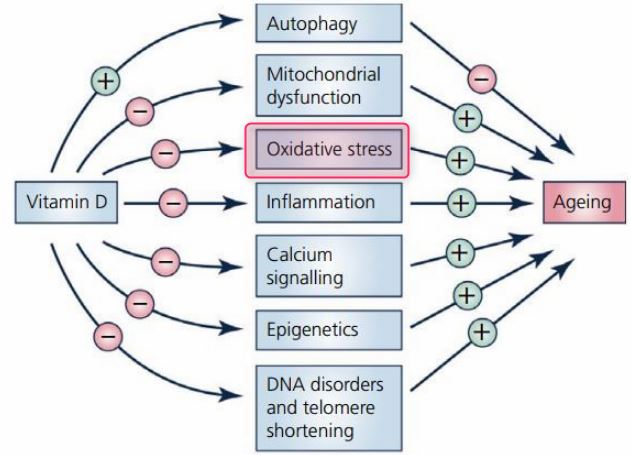DNA repair helped by Vitamin D - many studies
23 studies: DNA damage is prevented by Vitamin D – Review June 2023
Association of vitamin D with deoxyribonucleic acid (dna) damage: A systematic review of animal and human studies
Acta Biochim Pol . 2023 Jun 17. doi: 10.18388/abp.2020_6641
Mayang Indah Lestari 1, Krisna Murti 2, Iche Andriyani Liberty 3, Zen Hafy 4, Violantina Linardi 5, Muhammad Khoirudin 5, Tungki Pratama Umar 5
Vitamin D has anti-proliferative, anti-inflammatory, and apoptotic abilities. Vitamin D deficiency can induce deoxyribonucleic acid (DNA) damage. The aim of the study was to create a systematic review to analyze the relationship between vitamin D and DNA damage in various populations. PubMed, Scopus, EbscoHost, Google Scholar, and Epistemonikos were used to identify literature regarding the relationship between vitamin D and DNA damage. Assessment of study quality was carried out by three independent reviewers individually.
A total of 25 studies were assessed as eligible and included in our study.
Twelve studies were conducted in humans consisting of two studies with experimental design and ten studies with observational pattern. Meanwhile, thirteen studies were conducted in animals (in vivo). It is found that the majority of studies demonstrated that vitamin D prevents DNA damage and minimizes the impact of DNA damage that has occurred (p<0.05).
However, two studies (8%) did not find such an association and one research only found a specific association in the cord blood, not in maternal blood. Vitamin D has a protective effect against DNA damage. A diet rich in vitamin D and vitamin D supplementation is recommended to prevent DNA damage.
📄 Download the PDF from VitaminDWiki
Vitamin D, DNA, Multiple Sclerosis - RCT 2021
Vitamin D changes expression of DNA repair genes in the patients with multiple sclerosis
Gene 2021 May doi: 10.1016/j.gene.2021.145488 PDF is behind a $34 paywall
Roya Amirinejad 1 , Zeinab Shirvani-Farsani 2 , Bahar Naghavi Gargari 3 , Mohhamad Ali Sahraian 4 , Bahram Mohammad Soltani 1 , Mehrdad Behmanesh 5
Oxidative stress (OS) plays an essential role in demyelination and tissue injury related to pathogenesis of multiple sclerosis (MS). On the other hand, vitamin D (VD) as an antioxidant reduces oxidative stress and has been used as adjuvant therapy in autoimmune diseases. Although VD supplementation is suggested as a protective and immunomodulation factor for MS patients, the molecular mechanisms remain unclear. Given that VD may modulate the immune system of MS patients through the DNA repair pathway, we aimed to evaluate the effects of VD supplementation in DNA repair genes expression including OGG1, MYH, MTH1, and ITPA. Transcript levels were measured using the RT-qPCR method in peripheral blood mononuclear cells (PBMCs) of relapsing-remitting multiple sclerosis (RRMS) patients before and after two months of VD supplementation. Furthermore, in silico analysis and correlation gene expression analysis was performed to find the biological binding sites and the effect of NRF2 on the regulation of DNA repair genes. Our data revealed that in MS patients, 2-month VD treatment significantly altered the expression of MYH, OGG1, MTH1, and NRF2 genes. A significant correlation was observed between DNA repair genes and NRF2 expression, which was confirmed by the presence of antioxidant response element (ARE) binding sites in the promoter of OGG1, MYH, and MTH1 genes. This study demonstrated that the impact of VD on MS patients may be mediated through the improvement of DNA repair system efficiency. This finding brought some new evidence for the involvement of DNA repair genes in the physiopathology of MS patients.
18% of Breast Cancers are due to poor DNA repair - Dec 2017
Signatures of DNA-Repair Deficiencies in Breast Cancer
n engl j med 377;25 nejm.org December 21, 2017

📄 Download the PDF from Sci-Hub via VitaminDWiki
Vitamin D, DNA Repair Capacity and Breast Cancer - Sept 2020
Circulating Vitamin D Levels and DNA Repair Capacity in Four Molecular Subtypes of Women with Breast Cancer
Int. J. Mol. Sci. 2020, 21(18), 6880; https://doi.org/10.3390/ijms21186880
by Carmen Ortiz-Sánchez, Jarline Encarnación-Medina, Ralphdy Vergne. Luis Padilla, Jaime Matta

Vitamin D regulates estrogen synthesis among other mechanisms involved in breast cancer (BC) development; however, no evidence has been found regarding its relationship with DNA repair capacity (DRC) . Therefore, the objective of this study was to elucidate whether DRC levels are linked with plasma 25(OH)D levels. BC cases and controls were selected from our BC cohort. DRC levels were assessed in lymphocytes through the host-cell reactivation assay. 25(OH)D levels were measured using the UniCel DxI 600 Access Immunoassay System. BC cases (n = 91) showed higher 25(OH)D levels than the controls (n = 92) (p = 0.001). When stratifying BC cases and controls into low and high DRC categories, BC cases with low DRC (n = 74) had the highest 25(OH)D levels (p = 0.0001).
A positive correlation between 25(OH)D and DRC levels was found for the controls (r = 0.215, p = 0.043) while a negative correlation was found for BC cases (r = −0.236, p = 0.026). Significant differences in 25(OH)D levels were observed when stratifying by molecular subtypes (p = 0.0025). Our study provides evidence of a link between 25(OH)D and DRC in BC along with a description of to how 25(OH)D levels vary across subtypes. The positive correlation observed in the control group suggests that 25(OH)D contributes differently to DRC levels once the malignancy is developed.
📄 Download the PDF from VitaminDWiki
VDR regulates DNA repair of cells, but cancerous cells downregulate the VDR - 2016
Vitamin D/vitamin D receptor axis regulates DNA repair during oncogene-induced senescence
Oncogene volume 35, pages 5362–5376 (2016)
S Graziano, R Johnston, O Deng, J Zhang & S Gonzalo
Oncogenic Ras expression is associated with activation of the DNA damage response (DDR) pathway, as evidenced by elevated DNA damage, primarily DNA double-strand breaks (DSBs), and activation of DNA damage checkpoints, which in primary human cells leads to entry into senescence. DDR activation is viewed as a physiological barrier against uncontrolled proliferation in oncogenic Ras-expressing cells, and arises in response to genotoxic stress due to the production of reactive oxygen species that damage DNA and to hyper-replication stress. Although oncogene-induced senescence (OIS) is considered a tumor suppressor mechanism, the accumulation of DNA damage in senescent cells is thought to cause genomic instability, eventually allowing secondary hits in the genome that promote tumorigenesis. To date, the molecular mechanisms behind DNA repair defects during OIS remain poorly understood. Here, we show that oncogenic Ras expression in human primary cells results in the downregulation of BRCA1 and 53BP1, two key factors in DNA DSB repair by homologous recombination and non-homologous end joining, respectively. As a consequence, Ras-induced senescent cells are hindered in their ability to recruit BRCA1 and 53BP1 to DNA damage sites. Whereas BRCA1 is downregulated at transcripts levels, 53BP1 loss is caused by activation of cathepsin L-mediated degradation of 53BP1 protein. Moreover, we discovered a marked downregulation of vitamin D receptor (VDR) during OIS, and a role for the vitamin D/VDR axis regulating the levels of these DNA repair factors during OIS. This study reveals a new functional relationship between the oncogene Ras, the vitamin D/VDR axis and the expression of DNA repair factors, in the context of OIS. The observed deficiencies in DNA repair factors in senescent cells could contribute to the genomic instability that allows senescence bypass and tumorigenesis.
📄 Download the PDF from VitaminDWiki
23+ VitaminDWiki pages with DNA in the title
This list is automatically updated
{LIST()}
See also VitaminDWiki
Hypothesis – less vitamin D results in faster aging – Nov 2017 has the following graphic
- Low Vitamin D is one of the causes of oxidative stress and aging – March 2019


